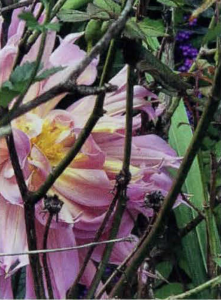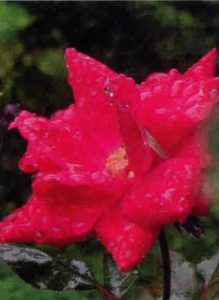By: Dr. Christine Bertz
This article originally appeared in the Winter 2020 issue of BEEKeeping Your First Three Years
From a plant’s point of view, honey is irrelevant. This prize of so many beekeepers — the result of a lifetime of labor by thousands of individual bees — is merely an incidental side effect, from this point of view. All that concerns a plant (if a plant can be said to be concerned about anything at all) is the need to lure over an insect to move its pollen from one flower to another. Without that need to employ the world’s tiniest courier service, plants would not produce nectar — and honey would not exist.
As anybody who’s ever planted the eye of a potato knows, plants are very good at reproducing without any need for pollination. But this clonal growth — asexual reproduction, in technical terms — doesn’t produce any genetic variation, and in the long-term, leaves plant populations less adaptable and more vulnerable to pests and disease. Sexual reproduction, and the diversity it yields, makes plant lineages more successful and more adaptable, but this requires fertilization. Plant sex is, by all accounts, strange and complex, but the first step is simple: the delivery of pollen to a flower — preferably a flower on a different plant. This means plants need a method to move pollen around.
Some plants enlist the wind for this task. In some ways this seems like the economy option, since there’s no need to grow showy, scented flowers or make nectar to reward visiting pollinators. But instead, these plants invest their energy in producing copious amounts of pollen, since to get to another plant of the same species, it has to get absolutely everywhere. And (to our regret) it does. As a result, wind-pollinated plants, including birch, oak, pine, and grasses, are responsible for many of our most aggravating seasonal allergies… as well as an excessive number of trips to the car wash.
Fortunately for those of us with allergies, these plants are in the minority. About 80% of flowering plants are pollinated by insects and other animals (birds, bats, and even a few mammals and reptiles). Recruiting these couriers comes with a metabolic cost, since plants must invest energy and resources in both nectar and the flowers that advertise its presence. But in return, plants gain a much more strategic delivery system. Not only do these plants need to make less pollen, but they can advertise for a specific type of pollinator — one that is likely to visit other flowers of the same species. For example, night-blooming flowers are typically large and pale, and are a sign that a flower is moth-pollinated. Twisty, contorted flowers like Dutchman’s pipe attract fly and beetle pollinators, and often produce a scent like rotten meat to do so. (The titan arum, nicknamed the corpse flower for its putrid smell, is another well-known example of a fly-pollinated plant.) And many bees, including the honey bee, are attracted most strongly by brightly colored flowers with open or bowl-shaped petals that can serve as a landing platform.
Turnabout is fair play: From a bee’s perspective, pollination is meaningless. The transfer of pollen from one flower to another is accidental, like spilling water from a bucket or tracking mud into the foyer. A bee’s priority is fulfilling its dietary needs. For the honey bee in particular, the sugars in nectar provide the colony with its main source of carbohydrate, while pollen contains a smorgasbord of carbs, protein, fats, vitamins, and minerals. The composition of nectar and pollen varies among plant species, a fact that is no surprise to any beekeeper. Honey color and taste varies with location and season, and bee bread made from different types of pollen exhibits an astounding array of colors. It should come as no surprise that this variation also represents a difference in nutritional content. (Research has shown that bees with access to variety in their pollen diet are healthier bees.)
Despite the selfish motives of plants and the pollinators, this mutually beneficial arrangement has produced many partnerships over time, with some coevolved plant-pollinator pairs relying solely upon one another for their needs. The adaptable honey bee, in contrast, is a generalist that will feed from, and can pollinate, many types of flowers — a skill-set that endears it to us greatly. The honey bee’s unique characteristics provide us with an efficient, transportable pollinator that is crucial to our current agricultural practices, even if this is not what the bee intends. Similarly, the need of plants for a pollen courier has — just incidentally — given us one of mankind’s first and most important sweeteners.
Pretty impressive work, for a process that neither the plant nor the bee sees in quite the same way.











